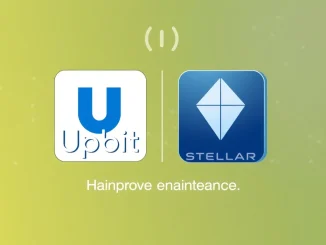
Get ready, Polygon community! A significant Polygon upgrade is on the horizon, set to potentially redefine transaction speed and network efficiency. On July 10, the network plans to implement the highly anticipated Polygon Heimdall v2 upgrade. This isn’t just any update; it’s being described as the most technically complex hard fork since Polygon’s proof-of-stake (PoS) network launched back in 2020.
What is the Polygon Heimdall v2 Upgrade?
Polygon (POL), a leading Layer 2 scaling solution for Ethereum, relies on a two-layer architecture: the Bor layer for block production and the Heimdall layer for validator management and checkpoints on Ethereum. The upcoming Polygon Heimdall v2 upgrade focuses specifically on enhancing the Heimdall layer.
According to reports, the core objectives of this major update are twofold:
- Significantly reduce transaction finality time.
- Address legacy technical debt within the Heimdall codebase.
Reducing finality is a critical goal for any high-performance blockchain or Layer 2 network. It refers to the time it takes for a transaction to be considered irreversible and permanently added to the blockchain. The v2 upgrade aims to bring this time down to around five seconds, a notable improvement that directly impacts user experience and application performance on Polygon.
Why is Reduced Blockchain Finality Important?
For users and developers interacting with the Polygon network, faster blockchain finality means several key benefits:
- Quicker Confirmations: Transactions are confirmed and settled much faster, improving the flow for payments, trading, and other activities.
- Enhanced User Experience: Applications feel snappier and more responsive when users aren’t waiting long periods for transactions to finalize.
- Improved Confidence: Faster finality increases confidence in the security and reliability of transactions on the network.
Achieving a five-second finality target is ambitious and positions Polygon favorably among other Layer 2 solutions, enhancing its appeal as a platform for decentralized applications (dApps) requiring speed and efficiency.
Addressing Technical Debt: A Crucial Step for a Robust Crypto Upgrade
Over time, software systems can accumulate ‘technical debt’ – shortcuts or suboptimal code choices made early on that can hinder future development, maintenance, and performance. Addressing this legacy technical debt in the Heimdall layer is a vital part of the Polygon Heimdall v2 upgrade.
Clearing technical debt can lead to:
- A more stable and reliable network infrastructure.
- Easier implementation of future features and improvements.
- Potential performance optimizations beyond just finality.
- Reduced risk of bugs or security vulnerabilities associated with older code.
This aspect of the upgrade, while less visible to the end-user than faster finality, is fundamental to the long-term health and scalability of the Polygon network as a leading Layer 2 scaling solution.
What Makes This Polygon Upgrade So Complex?
Describing the Polygon upgrade as the “most technically complex hard fork” since the 2020 PoS launch highlights its significance and the engineering effort involved. A hard fork requires all network participants (specifically validators and node operators) to upgrade their software simultaneously to the new version. Failure to upgrade means they would be left on the old chain, incompatible with the new one.
The complexity likely stems from:
- Deep-level changes to the core Heimdall consensus and validator logic.
- Ensuring seamless transition and compatibility during the upgrade process.
- Coordinating a global network of validators to adopt the new software by the July 10 deadline.
Successful execution of such a complex crypto upgrade demonstrates the robustness of the Polygon development team and its commitment to continuous improvement.
Looking Ahead: The Impact of Heimdall v2
The Polygon Heimdall v2 upgrade on July 10 is more than just a technical update; it’s a strategic move to solidify Polygon’s position in the competitive Layer 2 scaling space. By drastically improving blockchain finality and cleaning up the codebase, Polygon aims to offer a faster, more reliable, and more developer-friendly environment.
While the immediate focus is on finality and technical debt, a successful upgrade paves the way for future innovations and scalability enhancements on the network. Users and developers should monitor official Polygon channels for specific instructions or potential impacts leading up to and following the July 10 launch.
Conclusion: A Swift Leap Forward for Polygon
The upcoming Polygon upgrade to Heimdall v2 on July 10 marks a pivotal moment for the network. This complex hard fork, targeting significantly reduced blockchain finality and addressing technical debt, underscores Polygon’s commitment to evolving as a premier Layer 2 scaling solution. As the crypto world watches, the successful implementation of this crypto upgrade could herald a new era of speed and efficiency for applications built on Polygon, making transactions feel almost instantaneous and paving the way for future growth.



